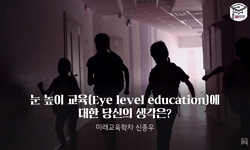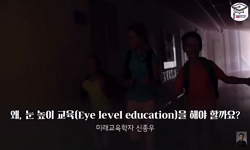The most theoretical ground in which thinkings of both, Buddhism and feminism can touch each other lies in the fact that the life-ism, an ism that all mankind is of the nature of Buddha, which should acknowledge he existential sanctity up ...
http://chineseinput.net/에서 pinyin(병음)방식으로 중국어를 변환할 수 있습니다.
변환된 중국어를 복사하여 사용하시면 됩니다.
- 中文 을 입력하시려면 zhongwen을 입력하시고 space를누르시면됩니다.
- 北京 을 입력하시려면 beijing을 입력하시고 space를 누르시면 됩니다.

불교 여성주의적 관점에서 본 〈盲兒得眼歌〉 연구 = A Study of 〈Hymn for blessed eye〉 in the light of Buddhistic feminism
한글로보기https://www.riss.kr/link?id=A76467123
- 저자
- 발행기관
- 학술지명
- 권호사항
-
발행연도
2004
-
작성언어
-
- 주제어
-
KDC
220
-
등재정보
KCI우수등재
-
자료형태
학술저널
-
수록면
145-164(20쪽)
- 제공처
- 소장기관
-
0
상세조회 -
0
다운로드
부가정보
다국어 초록 (Multilingual Abstract)
The most theoretical ground in which thinkings of both, Buddhism and feminism can touch each other lies in the fact that the life-ism, an ism that all mankind is of the nature of Buddha, which should acknowledge he existential sanctity up to the non-sentient things as well as the sentient things, comes to be accepted as a major concept of humanism. In this said paper, I try to reveal out the feminine meanings of 〈Hymn for blessed eye〉 found in {Samkukyusa : the history of three kingdoms} carrying Mahayanist Buddhism on its bottom through the symbol that implies "the eye". The song of a poor woman that brought itself in the tradition of 〈Hyangga〉, a literature of the gentility of buddist priests and Hwarang, etc. in origin, firmly came to establish itself as a scripture of the history of Korean literature by the "choosing" from the unbiased point of view of Ilyeon, the author of {Samkukyusa}. This equalitarian way of description has no less than an implication even from the viewpoint of feminism of today.<BR> Especially, the Buddha as the motherly image called Gwaneum(the Buddhist Goddess of Mercy) provides an opportunity of precious speculation toward the sacred image of woman who settles agony. Besides, the contents of {Hymn for blessed eye} that the healing power of Gwaneum works a miracle through the dearest wish of motherhood indicates very cherishable belief seen from the theoretical context of modern feminism that lays emphasis on a wide-ranged recognition about maternity. The "blinded eyes" of the child in {Hymn for blessed eye} are not the token of merely physical handcap but symbolize the existential anguish due to Karma caused from wrong-doing, sublimating to the meanings of religious desire that cures the personal suffering and practicing the conduct of Mahayana. The dream of the grief-stricken mother who hopes all the while for a miracle of openning the eyes of her child could, at last, draw up the curing power of Gwaneum, givig a birth to the miracle. The minds of both, Gwaneum and the mother, therefore, belong to oneness, and the mother, at this point, come to be defined eventually as an individual who already carries the mind of Buddha in.<BR> The aspiration and the belief that are set to overcome the personal agony and to heal and to save the anguish of others, by regaining one"s self innate Buddhahood is the very humanistic starting point of Buddhism that was originated from the insight of pang and pain of mankind. This is the most significant part that is able to communicate with the modern feminism that has given ear to the feminine wounds and sufferings constantly impaired through the wrongly-constituted eye of cognizance and that has re-specified the dignity and value of its existence in a wide range.
목차 (Table of Contents)
- Ⅰ. 서론
Ⅱ. 어머니像으로서의 부처와 觀音의 눈
Ⅲ. 끝없는 발원으로서의 여성주의
영문초록
- Ⅰ. 서론
Ⅱ. 어머니像으로서의 부처와 觀音의 눈
Ⅲ. 끝없는 발원으로서의 여성주의
영문초록
동일학술지(권/호) 다른 논문
-
- 불교학연구회
- 師 茂樹(모로 시게키)
- 2004
- KCI우수등재
-
- 불교학연구회
- 望月海慧(모지츠키 카이에)
- 2004
- KCI우수등재
-
『능가경』의 禪法과 초기 禪宗(3) - 如來禪ㆍ祖師禪의 문제
- 불교학연구회
- 박건주(Park keon-joo)
- 2004
- KCI우수등재
-
- 불교학연구회
- 변희욱(Byun Hee-Wook)
- 2004
- KCI우수등재




 RISS
RISS 스콜라
스콜라







